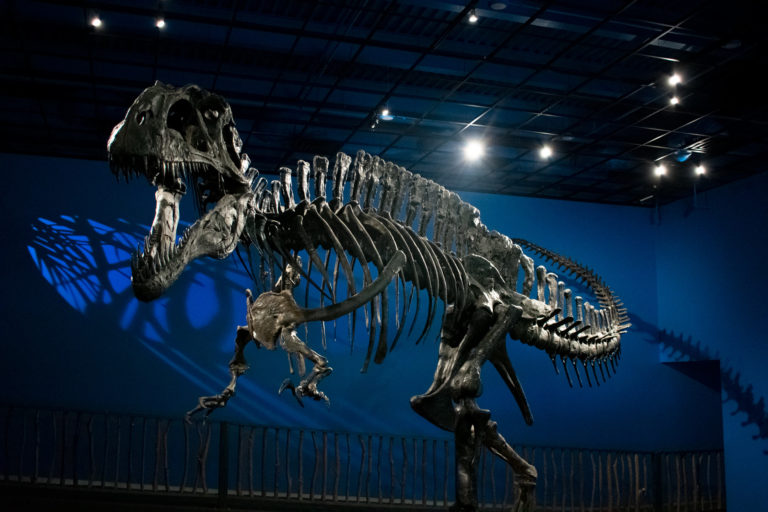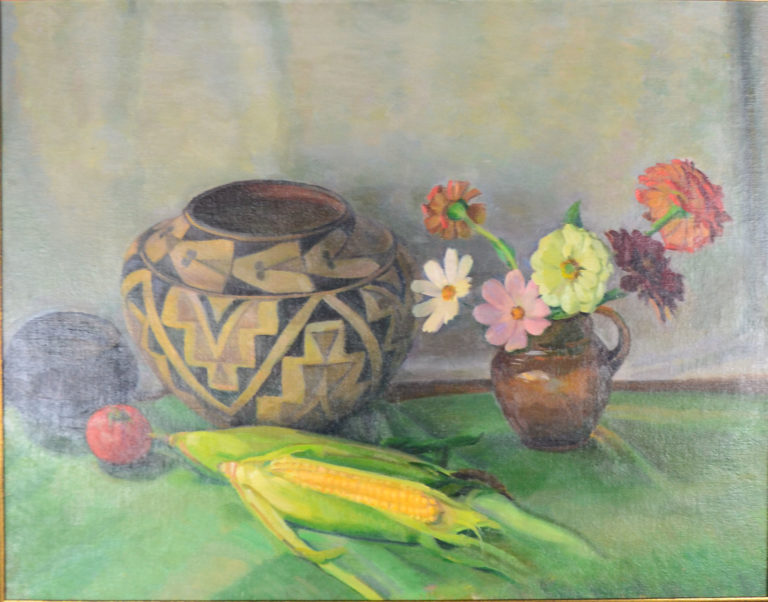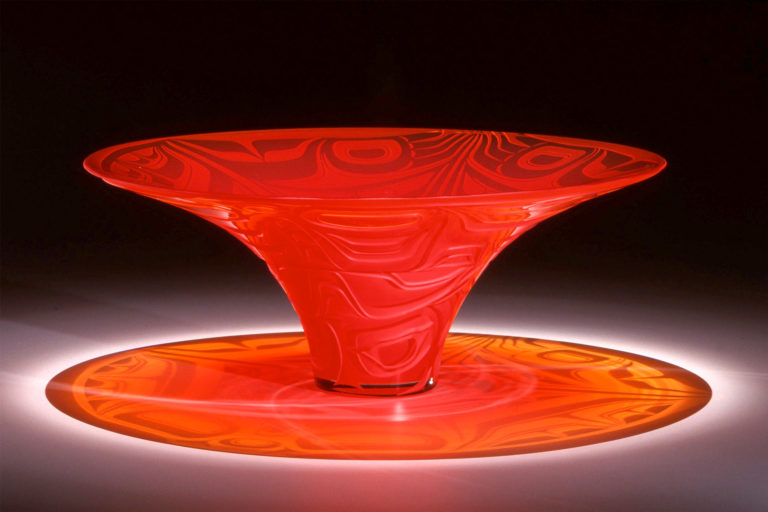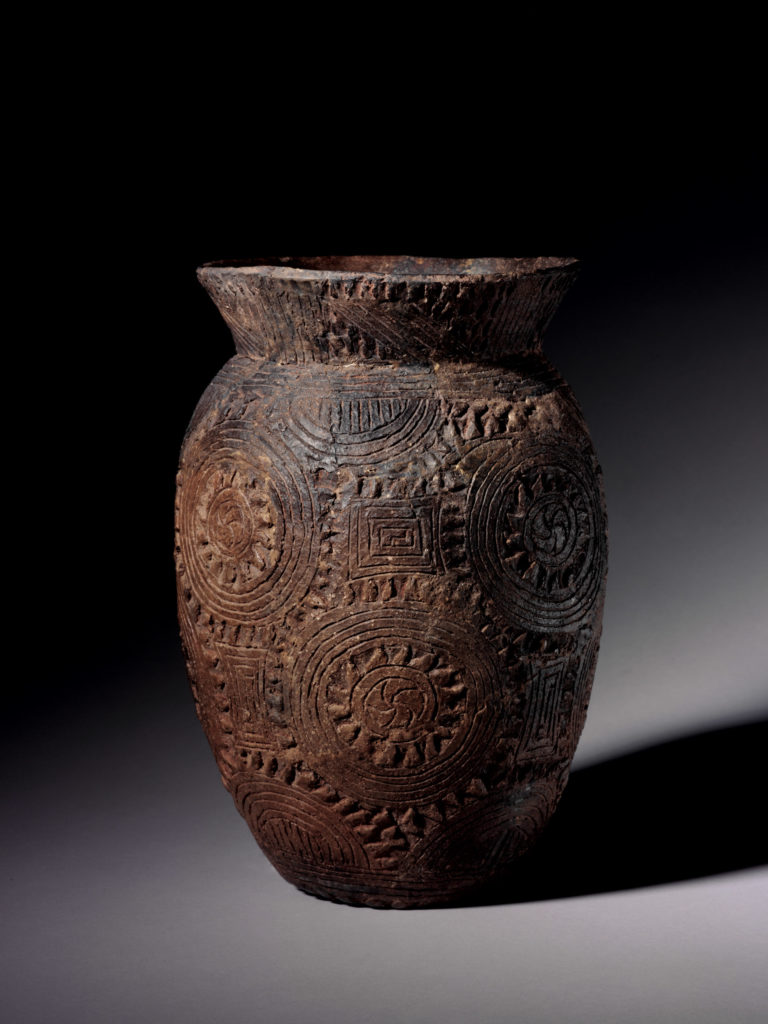Permanent Exhibits
Acrocanthosaurus atokensis
At nearly 40 feet long, Acrocanthosaurus atokensis—or Acro—was one of North America’s largest predators (100 – 115 mya). With a large head, powerful back legs, and relatively small arms, it looked very similar to a Tyrannosaurus rex. However, unlike a T. rex, Acro had tall spinal processes, which supported a strong muscle ridge or “sail”. Scientists are unsure what purpose it served.
Recent Acquisitions
The Museum of the Red River opened in 1975 with a focus on regional archaeology. It supported local field research, often in collaboration with the Oklahoma Archeological Survey and the U.S. Forest Service. However, it also collected complementary material for educational purposes. In the 1980s, it ceased all field operations and returned any materials recovered under government contract to the appropriate agencies. It expanded its collecting interest to include art from the Americas, Africa, Asia and Pacific Islands.
Founder’s Gallery
The Founder’s Gallery celebrates the generosity of the Herron family and other major donors to the collections. It features some of the finest examples of material culture available for public study. Next to the Founder’s Gallery is the J. Marshall and Sally Gettys Family Gallery. The new, intimate exhibit space honors the work of the late J. Marshall Gettys, and the continuing generosity of his wife Sally Gettys, their extended family, and friends.
Gregory H. Perino
Archaeological Study Area
The Study Area is a collection of regional archaeological material that honors the work of Gregory H. Perino, an archaeologist and the Museum’s first director. Among the displayed objects are hundreds of stone points and tools. The space also features several examples of Caddoan ceramics, ranging from the Mississippian phase (A.D. 700 – 1500) to contemporary works by Jeri Redcorn (b.1939) and Chase Kahwinhut Earles (b. 1976).
Caddo pottery is one of the finest prehistoric ceramic traditions in the United States. It evolved from the shapes of baskets and gourd containers that were used for storing and serving food. Historic accounts state that certain vessels were reserved for serving specific foods. A vessel used for meat would not have been used for beans or corn. Others were used in ceremonial contexts.
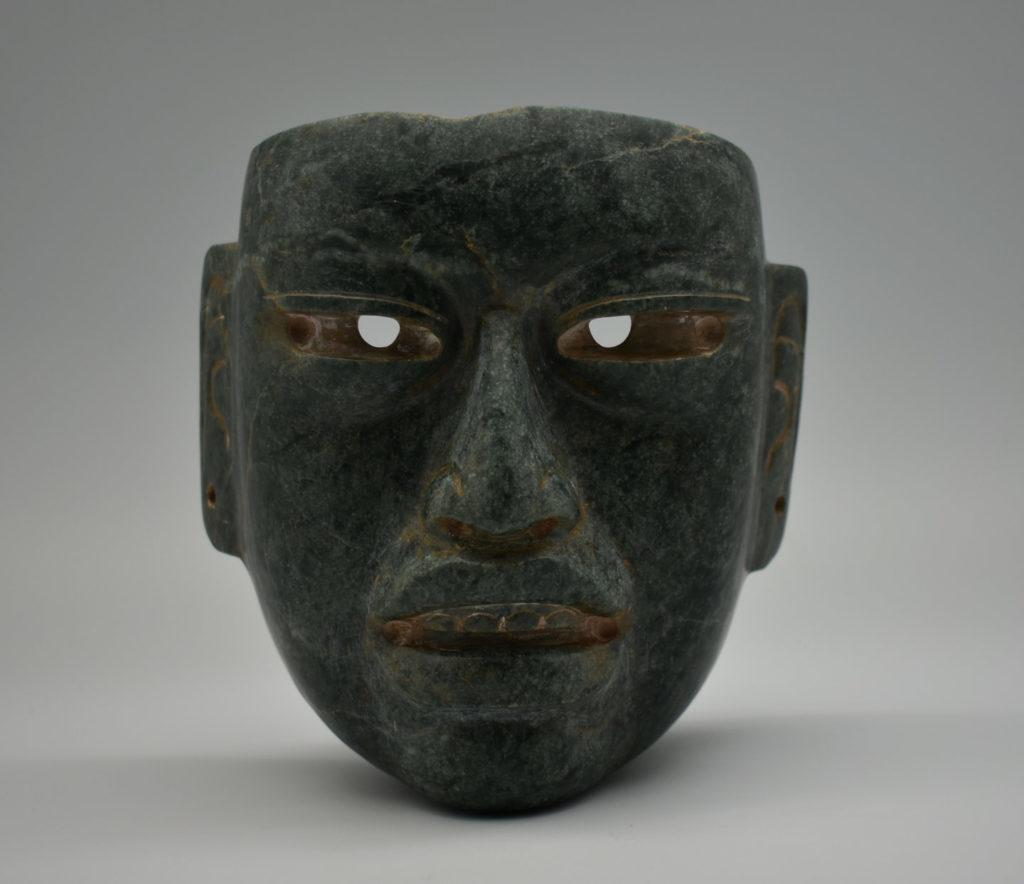
Lifeways Gallery
We make and use objects to cope with our physical and social environments. These objects are often called artifacts by anthropologists. Artifacts provide a window into the most mundane and most special parts of our lives. The items on display in the Lifeways Gallery illustrate the ethnological themes of domestic life, beliefs, encounters, and technology and art. Among the items on display are two Conibo-Shipibo (Peru) jars, a jar by renowned Mexican ceramist Juan Quezada, and a Choctaw-style burden basket by Tom Colvin.
[Pictured: Mask, ca. 800 – 300 BC, Olmec (Mexico). Gift of Robert Chorost.]

